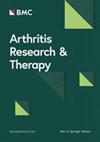18F-FDG PET-CT对巨细胞动脉炎主要颅型和孤立颅外型动脉受累的比较分析
IF 4.6
2区 医学
Q1 Medicine
引用次数: 0
摘要
探讨巨细胞动脉炎(GCA)主要颅型和孤立颅外型在18F-FDG PET-CT上动脉受累模式的差异。回顾性分析140例确诊GCA患者的18F-FDG PET-CT表现。将患者分为两组:颅组在诊断或随访时均出现颅面缺血症状,而孤立颅外组则未出现此类症状。在140例患者(90名女性)中,99例(71%)被认为具有主要的颅骨表型,而41例(29%)有孤立的颅外GCA。颅外表型患者较年轻(p = 0.001), TAB阳性较低(25%),诊断延迟时间较长(p = 0.004)。多肌痛风湿病在颅外组更常见(p = 0.029),同时也表现出较少的体质症状,急性期反应物的轻度增加,更频繁的肢体跛行和主动脉并发症,尽管这些差异没有统计学意义。当比较18F-FDG PET-CT的动脉受累情况时,我们观察到有统计学意义的差异。颅外表型显示更多的累及胸主动脉的所有节段(p = 0.001),以及腹主动脉(p = 0.005)、锁骨下动脉(p = 0.021)、髂动脉(p = 0.004)和股动脉(p = 0.025)。相比之下,颅骨表型显示椎动脉受累的频率更高(p < 0.001)。在18F-FDG PET-CT上观察到不同表型之间动脉受累模式的显著差异。这些发现可以解释非典型症状,如炎症性腰痛或肢体跛行以及颅外GCA的主动脉并发症风险增加。本文章由计算机程序翻译,如有差异,请以英文原文为准。
Comparative analysis of arterial involvement in predominant cranial and isolated extracranial phenotypes of giant cell arteritis using 18F-FDG PET-CT
To investigate differences in arterial involvement patterns on 18F-FDG PET-CT between predominant cranial and isolated extracranial phenotypes of giant cell arteritis (GCA). A retrospective review of 18F-FDG PET-CT findings was conducted on 140 patients with confirmed GCA. The patients were divided into two groups: the cranial group, which presented craniofacial ischemic symptoms either at diagnosis or during follow-up, and the isolated extracranial group which never exhibited such manifestations. Of the 140 patients (90 women), 99 (71%) were considered to have a predominantly cranial phenotype, while 41 (29%) had isolated extracranial GCA. Patients with the extracranial phenotype were younger (p = 0.001), had lower TAB positivity (25%), and experienced longer diagnostic delays (p = 0.004). Polymyalgia rheumatica was more common in the extracranial group (p = 0.029), which also showed fewer constitutional symptoms, milder increases in acute phase reactants, and more frequent limb claudication and aortic complications, although these differences were not statistically significant. When comparing arterial involvement on 18F-FDG PET-CT, we observed statistically significant differences. The extracranial phenotype showed greater involvement across all segments of the thoracic aorta (p = 0.001), as well as in the abdominal aorta (p = 0.005), subclavian (p = 0.021), iliac (p = 0.004), and femoral arteries (p = 0.025). In contrast, the cranial phenotype exhibited a higher frequency of vertebral artery involvement (p < 0.001). Significant differences in arterial involvement patterns on 18F-FDG PET-CT were observed between phenotypes. These findings may explain atypical symptoms such as inflammatory lower back pain or limb claudication and the increased risk of aortic complications in extracranial GCA.
求助全文
通过发布文献求助,成功后即可免费获取论文全文。
去求助
来源期刊

Arthritis Research & Therapy
RHEUMATOLOGY-
CiteScore
8.60
自引率
2.00%
发文量
261
审稿时长
14 weeks
期刊介绍:
Established in 1999, Arthritis Research and Therapy is an international, open access, peer-reviewed journal, publishing original articles in the area of musculoskeletal research and therapy as well as, reviews, commentaries and reports. A major focus of the journal is on the immunologic processes leading to inflammation, damage and repair as they relate to autoimmune rheumatic and musculoskeletal conditions, and which inform the translation of this knowledge into advances in clinical care. Original basic, translational and clinical research is considered for publication along with results of early and late phase therapeutic trials, especially as they pertain to the underpinning science that informs clinical observations in interventional studies.
 求助内容:
求助内容: 应助结果提醒方式:
应助结果提醒方式:


